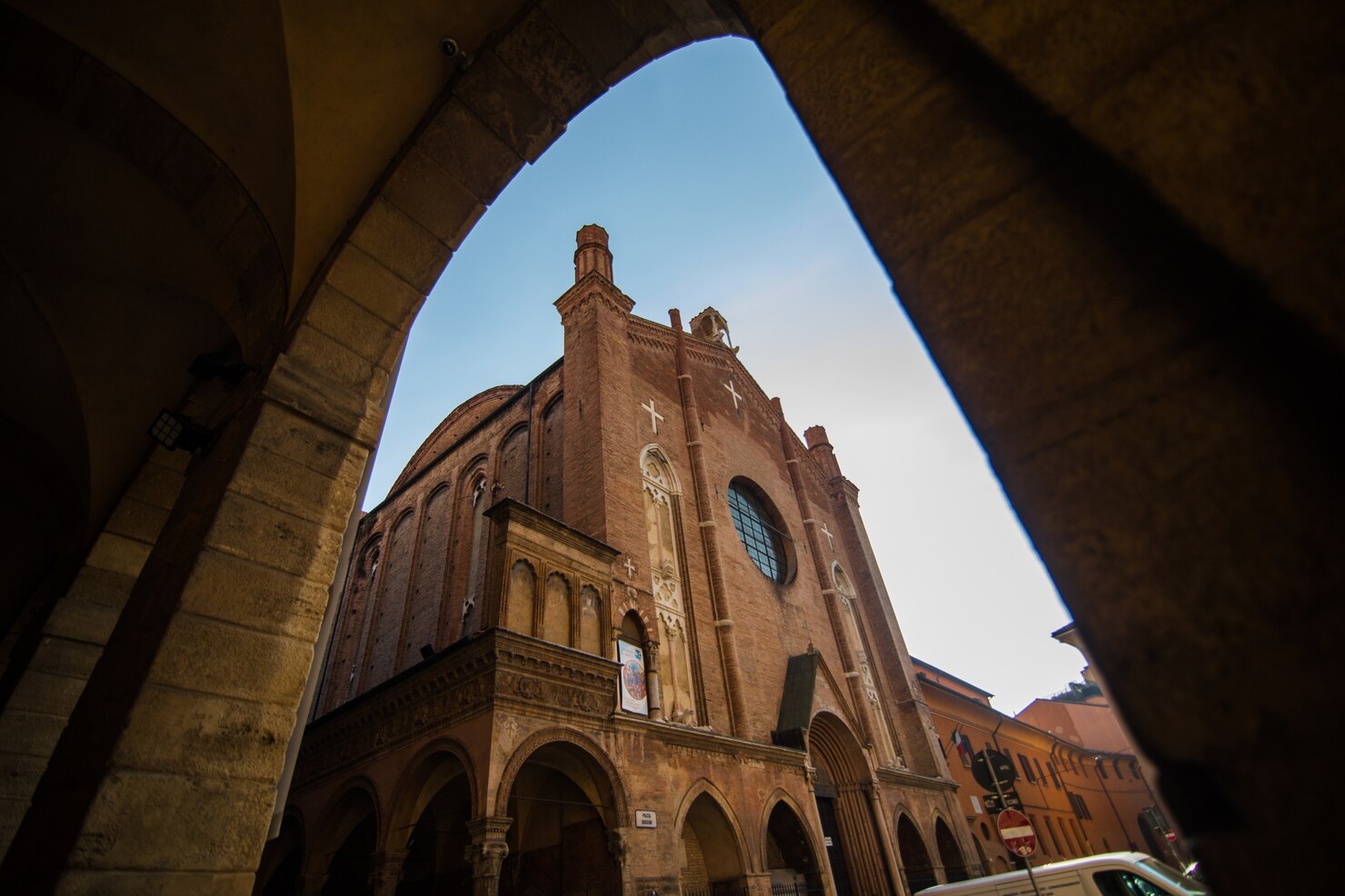10 things to see in Bologna: art, food and underground canals
Here you are in Bologna: what to see? The Learned, the Fat and the Red: this is how the Emilian capital is defined. The Learned refers to the presence of one of the oldest universities in Italy, the Red recalls the color of the buildings, red and warm like the typical Bolognese terracotta; the Fat indicates the delicious gastronomic tradition. If you are on vacation in Bologna and need ideas, here are 10 destinations in the historic center and beyond.

Why visit Bologna?
This university city of Etruscan, Roman and medieval tradition, with 38 km of UNESCO heritage porticoes, is also famous for its good food and for the hills that rise from the southern slope. Furthermore, Bologna is a young, lively city full of clubs and bars where you can have fun. Let’s find out immediately what to see in Bologna.
Bologna to see and taste: 10 unmissable stops
What to see and what to visit in Bologna city center? If you are looking for 10 things to see in Bologna in one day, here is a list of destinations that might interest you.
1. Piazza Maggiore
The beating heart of the city, Piazza Maggiore was the center of civil and religious life in Bologna, and can be reached from the train station by walking about fifteen minutes.
In the center is the famous crescentone, a raised pavement in white and pink granite, and all around stand some of the most important buildings in the city: the Palazzo Comunale, the Palazzo dei Banchi, the Palazzo del Podestà, the Palazzo dei Notai and, of course, the Basilica of San Petronio.
The church is a masterpiece of Gothic art, full of frescoes of great value and a very important sundial. A few steps away, in via dell’Indipendenza, we find the metropolitan cathedral of San Pietro, with its typically Baroque facade.
2. Piazza del Nettuno
Next to Piazza Maggiore we find the second most famous square in the city, which overlooks Palazzo Re Enzo and in the center of which stands the statue of the god of the sea, created by Giambologna in the 16th century.
Overlooking the square is the Salaborsa (Stock Exchange Room), an important and famous library, with a very interesting history (it was also home to the first botanical garden of the city, now in Via Irnerio 42), which can be visited for free. Inside there is the covered square and the transparent floor, under which it is possible to admire the ancient Roman ruins.
3. Archiginnasio and Anatomical Theater
Walking under the portico del Pavaglione, to the left of the Basilica of San Petronio, you reach the entrance of the Palazzo dell’Archiginnasio, built between 1562 and 1563, the ancient and historic seat of the University, which houses the Anatomical Theater and the Municipal Library of the same name.
4. Quadrilatero
From the Portico del Pavaglione (Pavaglione Arcade) you can reach one of the oldest areas of the city, the medieval market, commonly called Quadrilatero, because it is enclosed in a square formed by Via Rizzoli, Via dell’Archiginnasio, Via Farini and Via Castiglione.
In this very characteristic area you can find fruit and vegetable stalls, fish stalls, delicatessens and other shops with all sorts of Bolognese specialties. The restaurants offer tagliatelle, tortellini and green lasagne, while in some wine bars you can have an aperitif with a nice platter of typical cured meats.
5. Towers
The towers of Bologna are a peculiarity of the city. Of the countless towers that were built between the 12th and 13th centuries, less than twenty remain today. The Torre degli Asinelli is currently closed for maintenance work in the area, but you can climb the Prendiparte tower (or Torre Coronata) and enjoy a breathtaking view from 60 meters high.
6. Piazza Santo Stefano
Dominated by the complex, also known as the Seven Churches, the square is overlooked by Casa Berti, Palazzo Isolani and the sixteenth-century Palazzo Bolognini Amorini Salina, with its capitals, whose construction is attributed to Andrea da Formigine and Properzia de’ Rossi, the first female sculptor in Europe.
7. Canals of Bologna
Bologna has always been a city of water and grain and silk mills (and even a port city, given the ancient presence of a port and a dock in medieval times, for important trade with Romagna and Venice, to which Bologna exported hemp for ropes).
Much of the water network is now underground. However, a characteristic glimpse can be discovered by opening a small window located in Via Piella. Here the view is on the Canale delle Moline, used for centuries to power the water mills with which the grain was processed.
The Consortium of Bologna Canals often organizes guided tours.
8. Pinacoteca Nazionale
The Pinacoteca is located a few minutes from the Due Torri, in the university area, inside the former Jesuit Novitiate of Sant’Ignazio from 1600. The building houses works by some of the most important Italian artists of the Renaissance, Mannerism and Baroque, such as Carracci, Guercino, Guido Reni, Raphael, Perugino, Tintoretto and Titian.
9. Portici UNESCO heritage
Of the 38 km that run through the city, the most famous stretch is the one that is almost 4 km long, which leads from Porta Saragozza to the Sanctuary of the Blessed Virgin of San Luca, symbol of Bologna, located on the Colle della Guardia, at about 300 meters above sea level. Here we go a little outside the city center.
10. Church of Santa Maria della Vita
The monumental complex of Santa Maria della Vita is located in the Quadrilatero. Inside the church, in Bolognese Baroque style, is kept the famous Lamentation over the Dead Christ by Niccolò dell’Arca, dating back to the second half of the fifteenth century. As you can see, there are many interesting itineraries, now it’s your turn!
